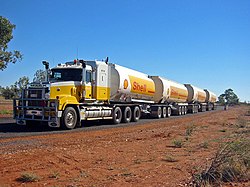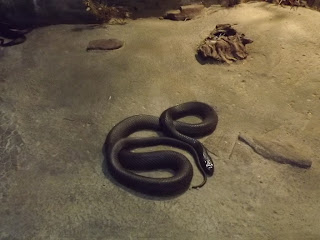View Larger Map
The second week on the country-continent, the "land down under", saw us road-tripping through New South Wales and Queensland, at the time both badly hit by flooding. As we left Sydney, we had 24 hours of virtually uninterrupted rain which forced us to spend most of that time inside the camping van we had rented. It is one of the best ways to travel Australia, allowing maximum flexibility and autonomy in one's travel plans, and avoids the hassle of buying a van and having ti sell it in a hurry when you leave. The back is made of storage docks that transform into a comfortable mattress in the evening, and it comes with a small fridge, a water tank with a sink, and even a retractable gas stove to cook anywhere.
 |
| Jucy Rental "campa" van! from left to right: water tank, fridge, gas cooker, and amazing cook! |
The rain stopped when we got into Queensland, Brisbane's state. We got a chance to reconnect with Susan, an Australian friend from Aiesec who had spent a year on the National Committee in Paris, and shared a wekk-end brunch with her and her friends at the recommendable Simpatico café. It is invigorating to be doing something "normal", i.e. something that feels like at home!
We then went on to drive a few hundred kilometers more to the North, to the Carnarvon National park, a millenia-old gorge carved by the Carnarvorn river through the Great Dividing Range. The Great Dividing range is a chain of moutains "dividing" the East coast of Australia from the rest of the country.
 |
| Carnarvon river. in the background, a little bit of the Great Dividing Range of mountains, where epic battles against Aborigines took place only a few centuries ago. |
 |
| Recent floods in Queensland "may have displaced rocks or made them unstable. Visitors are advised to be cautious!" |
On the way to the National park, we stop at small "wildlife center" where koalas, kangaroos, dingos, spider monkeys, and a few other very exotic species are looked after. Feeding time is an opportunity to take a few sleepy koalas from their branch and have them receive cuddles from the public. They have a very thick fur, look and feel like teddy bears, and sleep 18 hours per day, normally waking up only at dusk to eat eucalyptus leaves, their only food.
 |
| These buddies are SO cute it's unbelievable. It's like "live teddy bears" :-D |
Kangaroos are a lot of fun, their simple look an exotic mix of a rabbit head and a race dog rear-body.... but even that is not such a good comparison. A female was carrying its baby in the front pouch, the cub peering out from time to time and chewing unconvincingly at a few strands of grass.
 |
| hop hop hop... always jumping like a spring! |
 |
| Taking a nap in the mommy's front pouch. |
 |
| Miss a turn and you end up in Jurassic Park! this one looks like a surviving dinosaur... |
The rest of the trip to the Carnarvon gorge feels a bit like we are laving civilization behind: there are progressively less and less radio channels, the last ones are all about country music, until you are left with just static. By the time we wonder how to let people know where we are going, mobile networks are long gone. And indeed... how to cover such an immense territory with mobile networks, when there are only 20 million inhabitants concentrated in urban areas on the coasts? Internet was never available outside of the major cities anyways, and fuel price increases a good 30% as we go inland.
We make a call to the "base camp" at the entrance of the National Park prior to starting our last ride of the day, already at the end of the afternoon. A very distressed woman explains that with the night coming, water still covering parts of the road, and cattle and animals crossing all the time, she strongly feels we'd be better off crossing the next day. Thus, we end up spending the night on a red dust area used by trucks ("road trains" as they are called, with 3 wagons and 60 tires each... could be "road monsters"), on the side of a road, in the middle of nowhere.
 |
| Not my own picture, but you get an idea! |
When the night comes, by 7pm, the sky is clear and we probably never saw so many stars in our lives. Away from any other light source, all the dim rays from all the stars in the sky reach our eyes. They are everywhere. Even in the darkest parts of the sky, you can always find a tiny, flickering light showing that there is a star, or maybe there was, in that direction too.
The next morning, the last part of the way holds the camp woman's promises: flooded roads, abrupt crests, cattle squatting the road and kangaroos playing in the tall grass a few meters from us, when we were careful to approach them silently. A tough ride to make at night. The Carnarvon National Park is a huge playground for serious trekkers, the longest "walk" is a one-week circuit going around gorgeous sights and exploring the landscape from plains level to some of the close mountaintops.
 |
| Wait.... did we walk here? is this the way back to Ranger camp or is it the start of the week-long trek? argh. :-S |
We leave that for the pro trekkers, and get to see traces of Aboriginal art: shapes of hands and objects, marked by the projection of pigment around the shape on stone. Aboriginal people have live in this area for almost 20.000 years.
 |
| No kid's business: cave art was the work of grown men. Aboriginal tribes lived in this area for about 19.000 years. |
The park is home for more exotic species than we care to remember, including platypus and 2 of the 3 most venomous snakes in the country. Actually, on the way back, we spot on of them from the car, slowly moving on the side of the track.
 |
| One of the most venomous snakes in the world... This one was in a glass cage at the wildlife center, but we saw his twin brother on the side of the road. We went away very fast! |
Throughout the journey, we get to confirm our impression of Australians as friendly, smiling, helpful people. The urban youth tends to care more about fitness and food, balanced lifestyle, while in the remote countryside it seems to be about the comfort of life (often that means a 4x4 to get bread from the supermarket) and about the protection from natural threats, since insects and storms can be extreme hazards in those regions. Countryside houses only have one level and are very well-maintained, so you get this sense of modernism and cleanness.
All of that makes us both nostalgic of Europe and hungry for more discoveries!
Moving on to Santiago de Chile now!

No comments:
Post a Comment